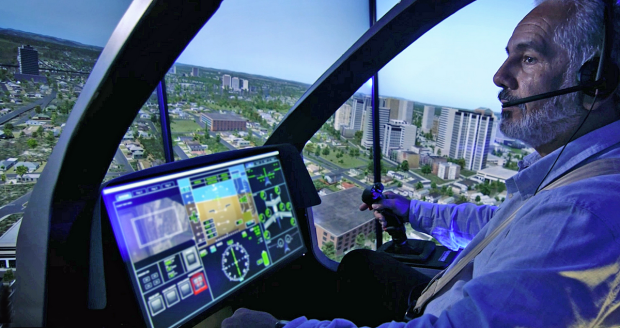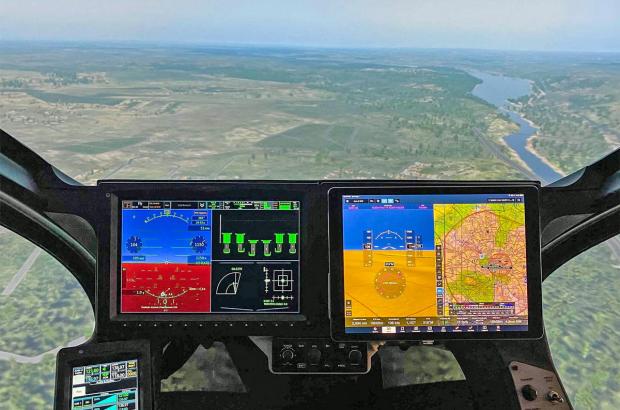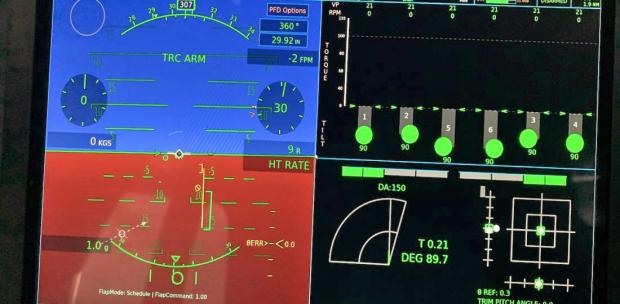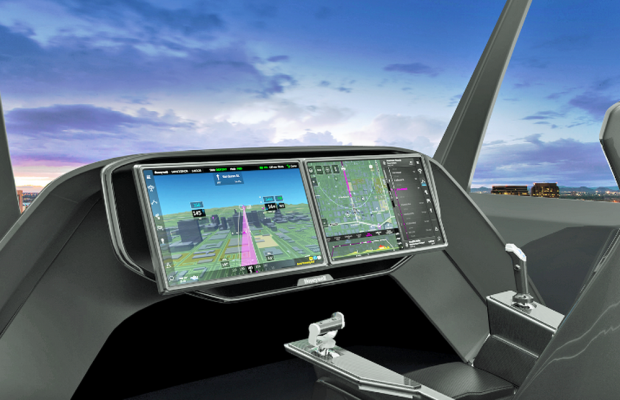The Unique Layouts of eVTOL Cockpit Instrument Panels & the role of Fly-by-Wire




Certifications are coming for a variety of vertical take-off and landing (eVTOL) aircraft, and several of the leading firms entering the eVTOL market are revealing their cockpit layouts. Because eVTOLs transition between vertical and horizontal flight modes, their cockpits combine elements of today’s helicopters as well as fixed wing aircraft, but are distinct from both. Another differentiation is the high degree of fly-by-wire software control over the eVTOL, which is necessary to simplify piloting an aircraft with multiple propulsors and complex control surfaces. These aircraft are highly robotic and make critical flight control decisions for the pilot. Here are the basics we’ve been able to find on eVTOL cockpit design from Joby, Archer Aviation, Lilium and Eve.
One of the design priorities at Joby is a significantly lower pilot workload than that of traditional aircraft. Joby “uses a unified flight control system, which is based on 30 years of research that resulted in the cockpit architecture of the F-35B, to combine vertical and cruise flight into the same control interface,” said Joby’s Greg Bowles, Head of Government and Regulatory Affairs. This builds on experience gained from early vertical take-off and landing aircraft, like the Harrier jet. Joby selected Garmin’s G3000 for its eVTOL flight deck (images 2 and 3). Microsoft Flight Simulator and Volocopter have partnered to integrate Volocopter's eVTOL air taxi, and VoloCity with vertiport landing areas, into the Microsoft Flight Simulator.
Ainonline.com editor-in-chief Matt Thurber tried out Joby fly-by-wire flight controls in Joby's eVTOL simulator. His review included vertiport landings and takeoffs by the Joby multirotor. Thurber commented on the Joby eVTOL’s flight characteristics: “I have to imagine that a ton of activity is going on with the computers and the motor controllers and fly-by-wire system to make everything integrate so smoothly, and for the pilot, that is the result: smooth banks, smooth pitch changes, smooth yawing motion with no wing dipping.”
Archer Aviation’s Midnight eVTOL will use a flight control strategy that is similar to the F-35’s unified controls, a representative from Archer told Avionics in an emailed statement. “From the pilot’s perspective, the control inputs will be the same whether in a hover or in forward flight,” said Archer’s spokesperson.
Germany’s Lilium has turned to Honeywell for flight control systems that will provide a simplified pilot user interface f to fly the Lilium eVTOL Jet. Jia Xu, CTO and Sr. Director of Engineering and AAM at Honeywell Aerospace, noted that fly-by-wire systems are essential to effectively control eVTOL aircraft in different flight modes. One eVTOL can have 20 or more different actuators and rotors, and there’s not an easy way to connect those controls in a way that would work throughout the flight envelope, he noted. “Space is at a premium, so the avionics panel has to fit in a very defined area” (last image).
Embraer’s subsidiary, Eve, is another leading eVTOL developer. Earlier this year, Eve chose the company Thales as a strategic partner to contribute expertise in developing avionics, electric, flight control, communication, and navigation systems. The company noted that because eVTOL aircraft will be operated by a single pilot, pilot assistance solutions and seamless connectivity to enable communications are even more important. Watch a video of Volocopter multirotors flying in Microsoft Flight Simulator here. For further details on eVTOL instrumentation, see Aviationtoday.com.
As a footnote to these fascinating eVTOL developments, we are curious what the failsafe systems will be in the event a flight computer freezes or goes offline? A backup computer? Ballistic Chutes? Onboard cabling that will enable the pilot to land manually? Stay tuned for more information.
--Thomas Atwood, Executive Director, NREF
